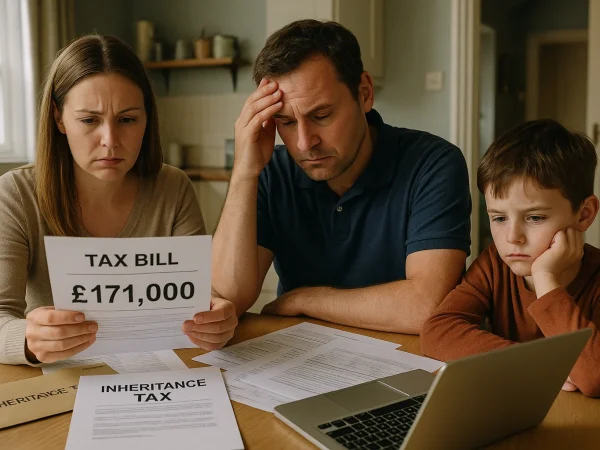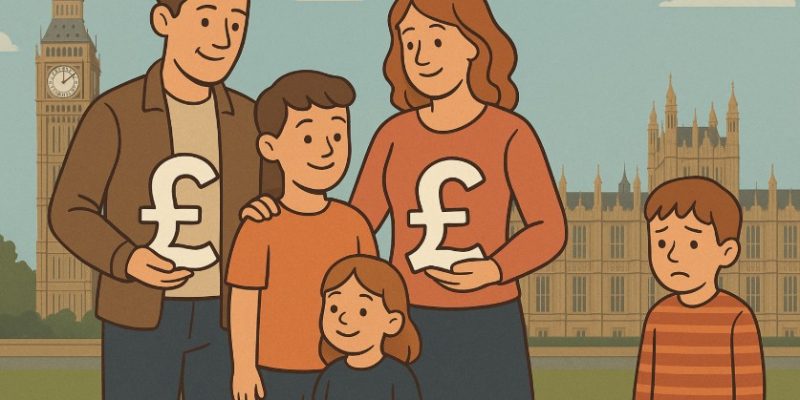
What is the Two Child Benefit Cap in the UK?
Introduced as part of welfare reforms in 2017, the two child benefit cap in the UK remains one of the most controversial policies affecting low-income families.
The measure limits the financial support available through Universal Credit and Child Tax Credit to the first two children in a household.
As a result, many families receive no additional state support for their third or subsequent children, with few exceptions.
This blog aims to explore the origins, functionality, impacts, and ongoing political debates surrounding the two child benefit cap.
With pressure mounting from within political circles and the public, the future of this policy is currently under intense scrutiny.
Why Was The Two Child Benefit Cap Introduced?

The two child benefit cap was introduced as part of a series of welfare reforms initiated by the Conservative-Liberal Democrat coalition government.
The measure was formally proposed in 2012 by then Work and Pensions Secretary Iain Duncan Smith. It was implemented under the premise of fairness and fiscal responsibility.
In 2015, then Chancellor George Osborne announced the policy as part of the 2017/18 financial year budget. The government’s rationale was based on two main objectives:
- To ensure that families on benefits made similar financial decisions about having children as working families
- To reduce overall welfare spending and contribute to public finance stability
The policy aligned with the broader austerity strategy of the time, which aimed to cut public spending following the 2008 financial crisis.
Supporters of the policy argued that limiting child-related benefits would encourage financial planning and reduce dependency on the welfare system.
However, the policy quickly became controversial, particularly among social welfare advocates and economists who raised concerns about its long-term effects on child poverty.
How Does The Two Child Benefit Cap Work?
The two child limit affects families claiming either Universal Credit or Child Tax Credit. It stipulates that families are only eligible to receive financial support for up to two children.
This applies only to children born on or after 6 April 2017. Any third or subsequent child born after this date does not qualify for additional support, unless the family qualifies for an exception.
The cap does not reduce benefits for children born before the cut-off date but blocks further claims for later-born children.
The policy applies automatically based on the children’s birth dates and their order within the family structure.
There are a few exceptions in which a third child may be eligible for benefit support:
- Multiple births (e.g., twins or triplets) after a first child
- Children adopted from local authority care
- Children born as a result of non-consensual conception
- Children under the responsibility of the local authority through formal guardianship
Families must apply for these exceptions through a detailed process, often requiring sensitive disclosures and evidence, particularly in the case of non-consensual conception.
What Are The Impacts Of The Two Child Benefit Cap?
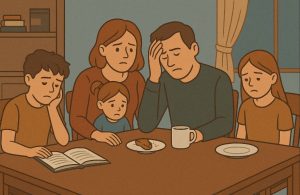
The policy has had widespread implications, primarily for low-income households and larger families. Social policy researchers and advocacy groups have reported significant increases in child poverty directly linked to the implementation of the cap.
Here is a table that summarises key statistics related to the policy’s impact:
| Indicator | Statistic |
| Children currently affected | 1.6 million |
| Children pushed into poverty in early 2024 | 10,000 |
| Daily increase in affected children | 109 |
| Projected child poverty by 2029 | 4.8 million |
| Children lifted out of poverty if cap removed | 470,000 (Resolution Foundation) |
The emotional and psychological toll on affected families is difficult to quantify, but multiple reports indicate increased financial stress, reduced access to educational opportunities, and poorer health outcomes among children.
Parents have reported having to make difficult choices regarding basic necessities, and in some cases, resorting to food banks or short-term loans to make ends meet.
Critics argue that such conditions undermine the long-term social development and wellbeing of children growing up in low-income households.
What Is Labour’s Current Position On The Two Child Benefit Cap?
The Labour Party has experienced significant internal debate over its stance on the cap. In 2023, party leader Sir Keir Starmer stated that Labour would not immediately abolish the policy due to financial constraints.
However, pressure from within the party has mounted, leading to a potential shift in direction.
Key developments include:
- Suspension of seven Labour MPs for voting with the SNP to scrap the policy
- Delay in the publication of Labour’s child poverty strategy, originally due in spring
- Sir Keir reportedly requesting Treasury analysis on the financial implications of scrapping the cap
- Statements from the Education Secretary in May 2025 suggesting the policy is under review
These actions have fuelled speculation that the government is preparing to announce significant reforms, possibly in the next budget. However, no official timeline or policy reversal has been confirmed.
How Many Children And Families Are Affected By The Cap?
The most recent government data shows that approximately one in nine children in the UK are affected by the two child limit. This equates to around 1.6 million children across various regions and demographics.
The policy disproportionately impacts:
- Families with more than two children
- Ethnic minority households
- Residents in economically deprived areas
This table offers a demographic breakdown of affected families:
| Demographic Group | Estimated Percentage Affected |
| Single-parent households | 59% of affected claims |
| Families from BAME backgrounds | 47% of affected claims |
| Households in urban areas | Higher concentration |
The Child Poverty Action Group has highlighted that each day, an estimated 109 additional children fall under the scope of the cap, increasing the risk of long-term financial hardship and social inequality.
What Would It Cost To Remove The Two Child Benefit Cap?

The estimated cost of scrapping the two child cap is approximately £3.4 billion per year, as calculated by the Institute for Government. This sum accounts for about 3% of the UK’s total working-age benefit budget.
To put the figure into perspective:
- The annual cost is roughly equivalent to the cost of freezing fuel duty for one full parliament
- Long-term social investment in children can offset this cost through improved education, employment, and health outcomes
Supporters of removing the cap argue that the potential return on investment justifies the expense. Research indicates that lifting children out of poverty can lead to:
- Increased lifetime earnings
- Reduced crime and healthcare costs
- Higher productivity and tax contributions
Economists suggest that the upfront cost is not only manageable but could produce net benefits over time.
Are There Alternatives Or Exceptions To The Two Child Policy?
The two child policy has faced substantial scrutiny from social policy experts, campaigners, and affected families.
While the government has implemented a set of limited exceptions, many argue these provisions are inadequate to address the policy’s broader social impact.
Additionally, growing calls for alternative approaches highlight a variety of potential reforms aimed at achieving a more balanced and compassionate welfare system.
Existing Exceptions To The Policy
Although the policy strictly limits benefits to the first two children born after April 2017, there are specific circumstances under which additional children may still be eligible for financial support.
These exceptions are highly regulated and often require significant documentation or evidence:
- Non-Consensual Conception: Commonly referred to as the “rape clause,” this exception allows for benefits to be claimed for a third or subsequent child if the child was conceived as a result of sexual assault. Claimants must complete a detailed form and provide a signed declaration from a professional (e.g., healthcare provider or social worker). This requirement has been heavily criticised for placing the burden on survivors to relive traumatic experiences.
- Multiple Births: If a parent has twins or triplets, and they are not the first children, they may still be entitled to support for all children in that birth. For example, if a family has one child and then gives birth to twins, they will receive benefits for all three.
- Adoption From Local Authority Care: Families who adopt children from the local authority care system are eligible to receive benefits for those children, even if they are the third or subsequent child. This exception does not apply to stepchildren or informal adoptions.
- Kinship Care or Guardianship: Children who are being cared for by relatives or guardians under formal arrangements, such as a Special Guardianship Order, may be exempt from the cap. These arrangements must be legally recognised for the exception to apply.
Despite these exceptions, they are not automatically applied and require claimants to navigate a complex and sometimes invasive bureaucratic process. Advocacy groups have long criticised the emotional toll this can take, particularly in sensitive cases involving abuse or family trauma.
Limitations Of The Exceptions
One of the most significant criticisms of the current framework is that it fails to consider a wide range of real-life family scenarios. Families who have experienced bereavement, illness, redundancy, or sudden changes in household composition may find themselves unfairly penalised despite genuine need.
Additionally:
- Families with informal care arrangements often fall through the cracks.
- Parents who separate and later remarry may not qualify for exceptions if their new partner brings additional children into the household.
- The administrative process can be especially burdensome for vulnerable individuals, such as those with disabilities or mental health conditions.
These shortcomings have prompted a broader discussion about whether the current policy framework is ethically and socially sustainable.
Policy Alternatives Under Consideration
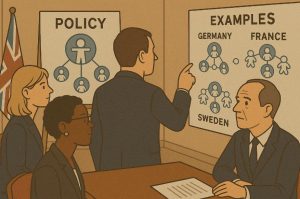
While no formal alternative has replaced the existing cap, several options have been proposed by think tanks, child welfare charities, and policy researchers.
These alternatives aim to preserve fiscal responsibility while reducing the negative impact on children and low-income families.
1. Phased or Gradual Removal of the Cap
Instead of scrapping the policy outright, one approach is to phase it out over several years. This would reduce the immediate financial burden on the government while signalling a shift toward more inclusive welfare policies.
2. Income-Based Eligibility
Another alternative is to assess child benefit eligibility based on household income rather than the number of children. This would ensure that benefits are targeted toward those in genuine financial need, regardless of family size.
3. Replacing With a Flexible Child Support Scheme
A needs-based model could replace the current cap, where families would be assessed on their specific circumstances. This might include factors such as local cost of living, number of dependents with disabilities, or recent changes in employment status.
4. Restoring Universal Child Benefits
Some campaigners argue for a return to universal child benefits, where all children receive support regardless of income or family size. While this would be a more expensive option, proponents argue that it is administratively simpler and reduces stigma associated with means-tested welfare.
5. Aligning With International Models
Many European countries offer scalable child benefits, where the level of financial support increases with each additional child. For example:
| Country | Benefit Model |
| Germany | Higher benefit for each additional child |
| France | Family allowance increases with child number |
| Sweden | Flat-rate universal child benefit per child |
Such models aim to support families equitably while encouraging positive child development and family stability.
Political and Public Sentiment Around Alternatives
Public opinion on the two child cap has gradually shifted, particularly as new data emerges about its effects on child poverty and inequality. Several Labour MPs, advocacy groups, and religious organisations have openly called for its removal or reform.
Political momentum is also building. In May 2025, the Education Secretary stated that lifting the cap was “not off the table.” This, combined with delays in the child poverty strategy, suggests active deliberation is taking place within government ranks.
However, opponents of reform argue that any alternative must be balanced against the country’s current fiscal constraints. They maintain that reforming the benefit system must not compromise broader economic stability.
Will The Two Child Benefit Cap Be Scrapped In The Near Future?
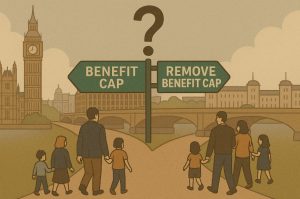
The government has not made a definitive decision on the future of the two child cap, but signs suggest that a policy review is underway.
Recent remarks by cabinet members and behind-the-scenes developments point toward the possibility of reform.
Some indicators include:
- Treasury reportedly evaluating the cost and feasibility of removing the cap
- Statements from the Education Secretary implying that the policy is under consideration
- Delay in the release of the child poverty strategy, believed to be connected to the ongoing review
Whether the cap will be scrapped, reformed, or retained will likely be revealed in the next major fiscal event or budget announcement. For now, families and campaigners continue to await clarity from the government.
Frequently Asked Questions
What types of benefits are affected by the two child limit?
The two child policy applies to Universal Credit and Child Tax Credit, limiting payments for the third and subsequent children born after April 2017.
Can grandparents or guardians claim beyond two children?
Only if they have a formal arrangement such as a Special Guardianship Order. Informal care arrangements may not qualify for exceptions.
Are adopted or foster children counted in the two-child rule?
Adopted children (excluding stepchildren) and children in formal foster care arrangements may be exempt from the cap.
Is the two child benefit cap applied automatically?
Yes, the system automatically applies the cap based on the date of birth of the children and their order in the family, unless exceptions are manually claimed.
How do I know if I qualify for an exception?
You must inform the Department for Work and Pensions (DWP) and provide relevant evidence to apply for an exception.
Does the two child policy apply to new immigrants in the UK?
Yes, the cap applies regardless of citizenship or immigration status, as long as the claimant is eligible for Universal Credit or Child Tax Credit.
Has any other country implemented a similar child benefit limit?
Few developed countries impose such a strict limit. Most European nations provide per-child benefits without capping the number of children.



